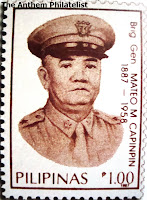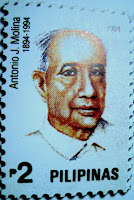Francisco da Silva- Brazilian Anthem Composer
 Brazil's anthem was originally composed in 1822 (the year of independence) and first performed in 1831. During the imperial period (1822-1889) and for the first few years of the republican period thereafter, the anthem was performed without words. After becoming a republic in 1889, it was often suggested among the republican groups in the country that a new anthem should be adopted, as the current anthem was composed during the imperial era, yet the anthem that had been in use ws declared official on January 20, 1890.
Brazil's anthem was originally composed in 1822 (the year of independence) and first performed in 1831. During the imperial period (1822-1889) and for the first few years of the republican period thereafter, the anthem was performed without words. After becoming a republic in 1889, it was often suggested among the republican groups in the country that a new anthem should be adopted, as the current anthem was composed during the imperial era, yet the anthem that had been in use ws declared official on January 20, 1890. Francisco Manuel da Silva, the anthem composer was born on February 21, 1795. He was a songwriter and music professor. He was born and died in Rio de Janeiro and was prominent in the musical life of Rio De Janeiro in the period between the death of Priest Jose Mauricio and Carlos Gomes. He was a singer of Capela Real since 1809, and later a cello player. He was one of the founders of Imperial Academia de Música e Ópera Nacional (National Imperial Music and Opera Academy), of Sociedade Beneficência Musical e Conservatório Imperial de Música, which become Instituto Nacional de Música (Nacional Music Institute) and is called Escola de Música da Universidade Federal do Rio de Janeiro (Rio de Janeiro University Music School).
He was taught by Priest José Maurício Nunes Garcia and, most probably, by Sigismund Neukomm. He was directly responsible for Capela Imperial's reinstatement, the later being turned to its old beauty. He left a handful of works, spread around Rio de Janeiro, Minas Gerais and Sao Paolo's archives, covering Gospel Music, Mohindas and Lundus.
He wrote Brazil National Anthem (Hino Nacional Brazileiro) first as a patriotic march, since Dom Pedro I resignation, later being officialized as anthem by Brazilian Republic Revolution (1889). He also composed one opera Prestigio da Lei. He died on December 18, 1865 in Rio de Janeiro.
Above is a stamp of Brazil anthem composer Francisco Manuel da Silva issued in 1945.






